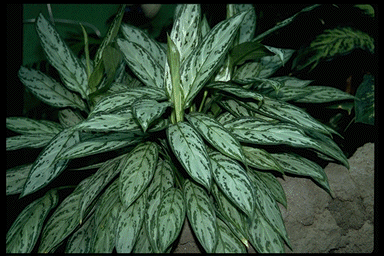SELENIUM
An antioxidant trace element that is found in shellfish, meat, poultry, grains, garlic, egg yolks. DOSAGE: Recommended daily allowance is approximately 60 micrograms. LIMITS: A toxic reaction can occur at levels above 400 micrograms a day. Selenium is typically involved in enzymes that are antioxidants. Selenium is associated with the lowering of cancer risk (breast, colon, lung and prostate cancers) and diseases involving the blood vessels of the heart. It is also considered an anti-aging agent and preserves the elasticity of tissues. It has also been used to counteract dandruff.
SHIITAKE MUSHROOMS (Lentinus edodes)
Also called ... “Japanese mushroom” Prized by the Chinese for thousands of years for it´s medicinal properties. It is dark and flavorful and used for treating sexual dysfunction.
Extracts have been shown to shrink tumors, lower cholesterol of the blood, combat viruses, combat bacteria, helps to stimulate the immunity system and fights cholesterol.
SIBERIAN GINSENG (Eleutherococcus senticosus)
An adaptogen herb which increases the resistance to the effects of stress. Siberian ginseng is considered the most useful one.
This is a most thoroughly documented herb, which is based on Russian studies.
SILYMARIN
An herb that reportedly protects and repairs damaged livers.
In a group of Hungarians, one month of treatment for patients with cirrhosis returned their liver functions to normal.
SKULLCAP:
See “scullcap”.
SLIPPERY ELM (Ulmus Fulva)
Also called ... “American elm”, “Indian elm”, “Moose elm”, “Red elm”, “Rock elm” and “Winged elm”... Inner bark is used to soothe and heals membranes of the lungs and gastro-intestinal tract. Used to treat inflamed membranes in the stomach, bowels, kidney and urinary tract. Also, used as a demulcent, diuretic, and emollient.
Effective, both internally and externally (in poultices), against inflamed mucous membranes ... considered an excellent agent for counteracting coughs.
SORREL:
Astringent, diuretic and laxative. Decoctions (process of boiling) have been used for hemorrhage in the stomach and for excessive menstruation.
CAUTION: Consuming large quantities may irritate the kidneys and result in mild to severe poisoning
SOY
Contains “ipriflavone” which is used in Japan and Europe to treat osteoporosis because it inhibits the breakdown of bone ... improves the bone´s ability to absorb calcium ... decreases bone pain (approximately 45% in half-a-year and 62% at the end of a full year. This substance is also known to produce stronger muscles ... increase stamina ... decrease LDL cholesterol.
CAUTION: May inhibit liver detoxification to produce increased theophylline in the blood.
SPIRULINA:
Considered to be a whole body tonic. This micro algea is a food substance that typically grows in warm, sunny environments. It thrives in alkaline water and produces 20 times as much protein as an equal growth of soybeans.
Uses in medicine include health rejuvenation and reduction of weight. It has a reputation of being an excellent cleaner of blood and the colon. Very high in vitamin B-12 content. Aids in mineral absorption, protects immunity system.
Nutrients include gamma-linolenic acid (GLA), linoleic acid, arachidonic acid, vitamin B-12, iron, 65% protein, essential amino acids, chlorophyll, RNA/DNA nucleic acids, phycocyanin (shown to increase the survival rate of mice with liver cancer).
People with hypoglycemia may benefit by ingesting this digestible food between meals since it´s high protein assists in stabilizing blood sugar levels.
STEVIA:
An herb far more powerful for sweetening than sugar. It can sweeten without the negative effects of sugar ... like, tooth decay, carbohydrates or calories. A natural alternative to refined sugars and artificial sweeteners. Said to counteract bleeding gums, cold sores, and sore throats. Also counteracts the development of dental plaque. Purported to have anti-diabetic properties.
STRING BEANS
Juices made from string beans seem to restore the pancreas, liver, and spleen, which secrete digestive fluids and the hormone insulin.
The following formula is an aid for diabetes (speak with your doctor) because it combines string beans with garlic (which lowers blood sugar levels).
4 celery stalks, 4 cloves of garlic, 24 string beans, 4 carrots, 1 cup of water, handful of parsley.
SUMA
Energy boosting herb from a plant located in the Brazilian rainforest. It has been nicknamed “the Brazilian ginseng”. Suma is also called ... "para toda".
500 Mg is equal to the energy provided by a cup of coffee and is effective within an hour of use. After three days of use it has a calming effect on the nervous system similar to ginseng.
Another benefit is that is can ease the hot flashes that come with menopause due to the plant estrogens “stigmasterol” and “sitosterol”. May inhibit melanoma tumor cells because ingredients have been shown to inhibit growth of cultured melanoma tumor cells. Purported to boost the immunity system, adapt the body to stress, counteract fatigue and relieve pain.
SUNFLOWER SEEDS:
Helianthus Annuus. Diuretic ... expectorant ... used to treat coughs, colds, whooping cough, and bronchial problems.
Return to top of page
| Home |
![]()
